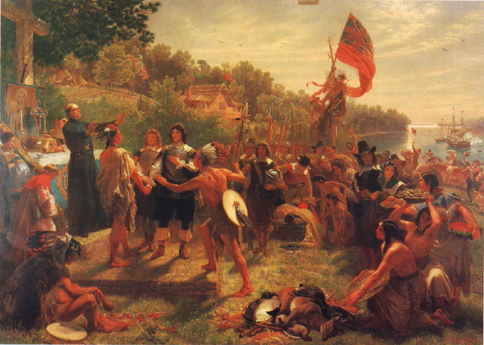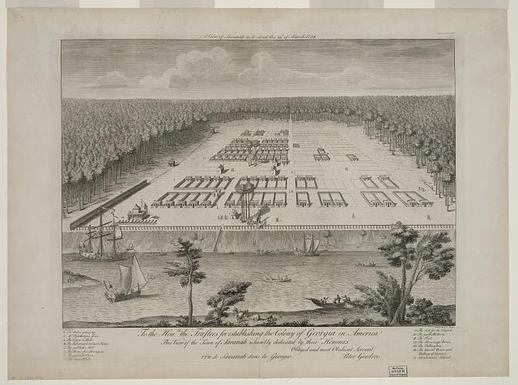Southern Colonies
Reading Material
Southern Colony: Maryland
Cecilius Calvert, an English nobleman also known as Lord Baltimore, started the colony of Maryland in 1634. He hoped to make money from the colony. Lord Baltimore also wanted to provide a safe place for Catholics like himself. In England and in some other colonies, Catholics were treated harshly.
Maryland’s geography was well suited for planting and selling tobacco. This crop grew well in hot, steamy summers. Chesapeake Bay was a route to the ocean for most settlers. Farmers near the bay could ship their crops to England and other places. Unfortunately, the climate also encouraged mosquitoes that spread deadly diseases.
There were many kinds of jobs in the colony. Most colonists worked on small farms. They grew tobacco, corn, wheat, and fruit trees. Some farmers raised cattle for beef and milk. Other industries included lumbering, shipping, and fishing. Some men made money by buying and selling slaves.
Some wealthy families owned tobacco plantations. Enslaved Africans and indentured servants did most of the work there.
Most colonists had little power in Maryland’s government. Lord Baltimore made his brother, Leonard Calvert, the governor of the colony. At first, Calvert made the decisions. Then, in 1637, he allowed the colony to have an assembly. For the most part, only white men with property voted for members of the assembly. Over time, more non-Catholics moved to the colony. Calvert had the assembly pass a law to protect Catholics’ right to vote and to serve in the government. These rights were denied to Catholics in some of the other colonies.
Maryland’s geography was well suited for planting and selling tobacco. This crop grew well in hot, steamy summers. Chesapeake Bay was a route to the ocean for most settlers. Farmers near the bay could ship their crops to England and other places. Unfortunately, the climate also encouraged mosquitoes that spread deadly diseases.
There were many kinds of jobs in the colony. Most colonists worked on small farms. They grew tobacco, corn, wheat, and fruit trees. Some farmers raised cattle for beef and milk. Other industries included lumbering, shipping, and fishing. Some men made money by buying and selling slaves.
Some wealthy families owned tobacco plantations. Enslaved Africans and indentured servants did most of the work there.
Most colonists had little power in Maryland’s government. Lord Baltimore made his brother, Leonard Calvert, the governor of the colony. At first, Calvert made the decisions. Then, in 1637, he allowed the colony to have an assembly. For the most part, only white men with property voted for members of the assembly. Over time, more non-Catholics moved to the colony. Calvert had the assembly pass a law to protect Catholics’ right to vote and to serve in the government. These rights were denied to Catholics in some of the other colonies.
Southern Colony: Georgia
The Southern Colony of Georgia was started in 1732 for two main reasons. First, the British government wanted to keep Spanish troops from moving north from Florida.
Second, some wealthy British men wanted to help poor people avoid going to debtors’ prison. A debtor is someone who owes something to another person. At that time, people went to jail if they could not pay their bills. Sending debtors to Georgia rather than jail gave them a new start. They had a chance to earn a living in the new colony.
Georgia’s geography was ideal for growing certain crops. Farming became the key industry in the colony. Winters were mild. Summers were long, hot, and humid. This climate was good for growing indigo, a plant used to make blue dye. The southern part of Georgia was mostly swamp. This land was ideal for growing rice. Later on, farmers grew tobacco and cotton.
People in Georgia also had other jobs. In the north, settlers cut down forests. They sold the lumber for homes. Then they cleared areas for farmland. Some colonists earned a living by trading goods with American Indians.
At first, only the rich men who had started the colony took part in running the government. They passed laws that they thought were best for the colony. They did not permit slavery. In 1752, however, these men turned control of the colony over to Great Britain’s King George II. The king allowed while male voters to elect an assembly. However, he could overturn any law the assembly passed. New laws made slavery legal, and it soon became widespread.
Second, some wealthy British men wanted to help poor people avoid going to debtors’ prison. A debtor is someone who owes something to another person. At that time, people went to jail if they could not pay their bills. Sending debtors to Georgia rather than jail gave them a new start. They had a chance to earn a living in the new colony.
Georgia’s geography was ideal for growing certain crops. Farming became the key industry in the colony. Winters were mild. Summers were long, hot, and humid. This climate was good for growing indigo, a plant used to make blue dye. The southern part of Georgia was mostly swamp. This land was ideal for growing rice. Later on, farmers grew tobacco and cotton.
People in Georgia also had other jobs. In the north, settlers cut down forests. They sold the lumber for homes. Then they cleared areas for farmland. Some colonists earned a living by trading goods with American Indians.
At first, only the rich men who had started the colony took part in running the government. They passed laws that they thought were best for the colony. They did not permit slavery. In 1752, however, these men turned control of the colony over to Great Britain’s King George II. The king allowed while male voters to elect an assembly. However, he could overturn any law the assembly passed. New laws made slavery legal, and it soon became widespread.
Information and Pictures from the Teacher's Curriculum Institute


